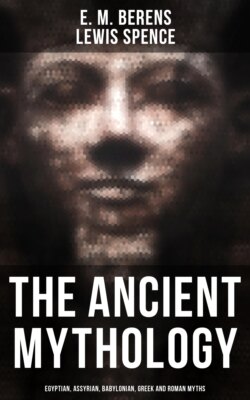Читать книгу The Ancient Mythology: Egyptian, Assyrian, Babylonian, Greek and Roman Myths - Lewis Spence - Страница 31
На сайте Литреса книга снята с продажи.
Grotefend
ОглавлениеBut a man of the greatest natural ingenuity was resolved to combat the difficulty presented by the cuneiform script. Georg Grotefend took up the task in the early years of the nineteenth century. Beginning with the assumption that the inscriptions represented three languages, and that one of these was ancient Persian, he took two of the inscriptions which he understood to be Persian, and placing them side by side found that certain signs were of frequent recurrence. This indicated to him the possibility that their contents were similar. A certain word appeared very frequently in the inscriptions, but it seemed to have two forms, a longer and a shorter, and this Grotefend, adopting a suggestion of Hunter's, took to mean 'king' in the short form and 'kings' in the longer, the juxtaposition of the two signs thus being taken to signify 'king of kings.' In both the inscriptions studied by Grotefend he found that this expression 'king of kings' was followed by the same word, which he took to mean 'great.' But there were no definite facts to support these hypotheses. Turning to certain Sassanian inscriptions which had recently been deciphered, he found that the expression 'great king, king of kings' inevitably occurred, and this strengthened his opinion that it was present in the inscriptions he studied. If this was so, thought he, the two texts under his observation must have been set up by two different kings, for the names were not the same at the beginning. Moreover the name with which text No. I began appears in the third line of text No. II, following the word supposed to be 'king,' and another which might mean 'son.' Grotefend thus concluded that in the two inscriptions he had the names of a triad of rulers, son, father, and grandfather. Applying to the list of the Achænenian dynasty in the attempt to find three names which would suit the conditions, he selected those of Xerxes, Darius, and Hystaspes. Supposing the name at the beginning of inscription I to be Darius, he thus considered himself to be justified in translating text I as "Darius, great king, king of kings, son of Hystaspes," and text II as "Xerxes, great king, king of kings, son of Darius." Considering that the Persian spelling of Darius would be Darheush, he applied the letters of that name to the letters of the cuneiform script. Subsequent investigation has shown that the name should have been read Daryavush, but Grotefend at least succeeded in discovering the letters for 'd,' 'a,' 'r,' and 'sh.'
But this was practically the end of Grotefend's discoveries. Burnouf, by a careful study of Persian geographical names, managed to decipher a large number of the characters of the Persian alphabet, and Professor Lassen of Bonn, by similar means, achieved a like end. These two independent achievements raised a fierce controversy as to priority of discovery, but Lassen's system was the more perfect, as he found out that the ancient Persian signs were not entirely alphabetic but were partially syllabic—that is, that certain signs represented syllables instead of letters. This meant that Grotefend's system, which had been almost vowelless, was now to a great extent filled in with the necessary vowels.
